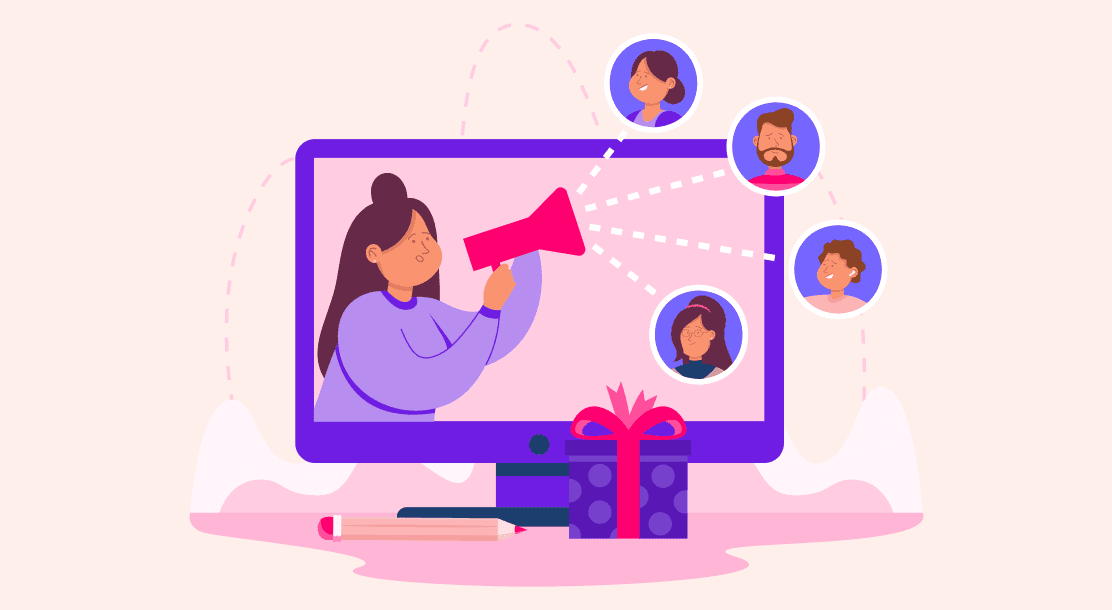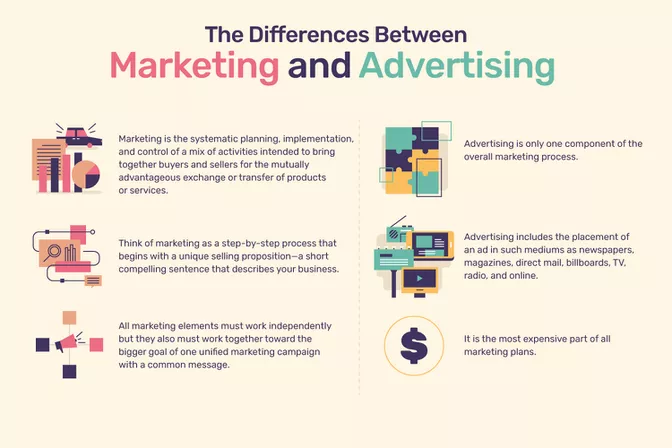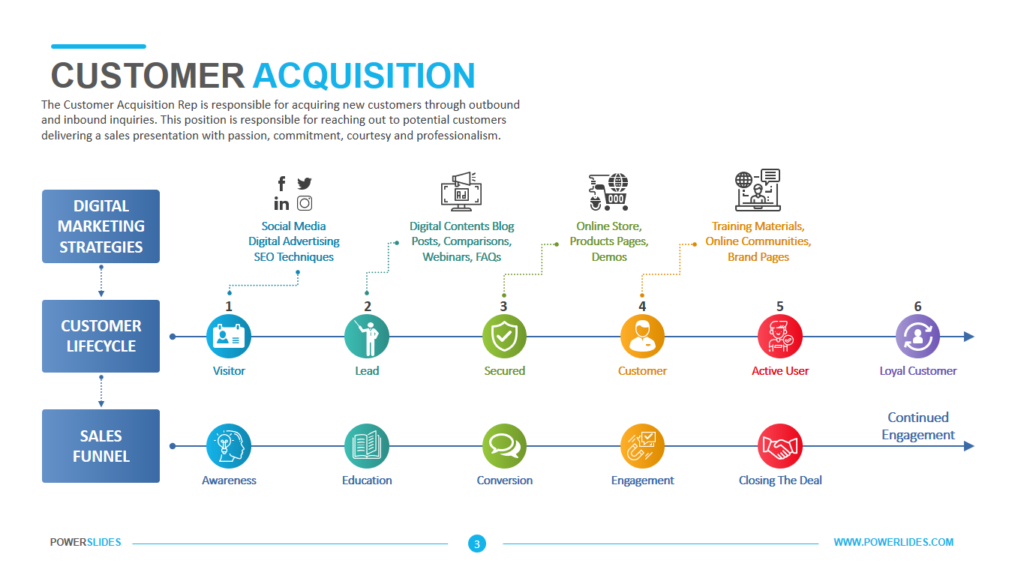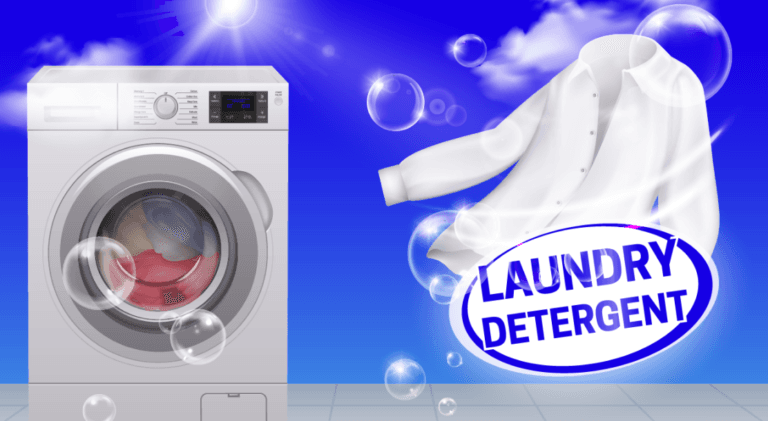Marketing vs Advertising: Maximizing Customer Acquisition

Table of Contents
- Marketing vs Advertising: What’s the difference between the two?
- Marketing vs Advertising: When to choose what?
- What is customer acquisition?
- How to maximize your acquisition efforts in 5 steps?
- Key Takeaways
- Conclusion
- FAQs
Marketing and advertising are concepts that many people often think to be the same: selling or trading products and services to the marketplace. However, they are two very distinct concepts that are interrelated. Understanding the difference between the two is crucial to ensure you give due attention to each. Let’s quickly understand the difference between marketing and advertising.

Marketing vs Advertising: What’s the difference between the two?

1. Marketing
Marketing is a broader term; it encompasses advertising and also includes other activities, such as adding new product features or choosing how to distribute your products. The primary purpose of marketing is to increase sales by attracting new or retaining existing customers. In other words, marketing has to do with getting a product or service from the manufacturer or business to the consumer.
2. Advertising
The concept of marketing is broader, encompassing advertising and adding new features to products, and deciding how to distribute them. Advertising is a subset of marketing and is one way to promote your business. There are many ways to advertise, such as on TV, radio, print (magazines, newspapers, flyers), online, or retail locations. The purpose of advertising is to get people interested in your business to buy your products or services.
Marketing vs Advertising: When To Choose What?
When it comes to marketing and advertising, there’s a lot of overlap. The main difference is that marketing focuses on building brand awareness, while advertising focuses on creating immediate sales. They can both be used to increase signups, but marketing usually works best when you have a long lead time (like weeks or months) before launch.
Advertising usually works best for short-term boosts in traffic, like right before launch or right after release. The bottom line is when you’re marketing a product, make sure that you understand the difference between promotional and acquisition efforts. Certainly, there are overlaps and interdependencies between these initiatives, but you must know exactly what your goals are so that you can allocate resources accordingly.
What Is Customer Acquisition?

Customer acquisition is the process of gaining new customers by stimulating interest in your product or service. You can accomplish this by assuming target customers’ needs and wants, building long-lasting relationships with those customers, and providing value to them. Acquisition marketing is the most crucial customer acquisition strategy for businesses. It involves reaching out to more consumers to convince them to use your product or service.
Further, it focuses on bringing in new customers rather than on customer retention, which keeps existing customers happy so that they stay with your business. A poorly executed customer acquisition strategy can negatively impact your company’s growth and profitability. However, a good one can lead to more sales and a higher lifetime value per customer.
How to Maximize your Acquisition Efforts in 5 Steps
If you have a high-quality product and a strong value proposition, you would think acquiring customers could be easy. Unfortunately, that’s not the case. It is getting harder to convince customers to buy your product or service in the current marketplace.
According to Harvard Business Review, the average conversion rate for e-commerce businesses is only 2% and 3%. This means that for every 100 visitors to your site, you can expect only 2 to 3 to make a purchase. So how will you maximize your acquisition efforts? Here are the five steps to help you do that:
1. Start collecting intent data
To increase your customer acquisition, start by collecting intent data. It is a behavioral dataset to determine whether a customer intends to buy your product or solutions. This will help you determine which keywords are used by visitors closest to making a purchase decision. You can also set up an intent platform to see what platforms your competitors are targeting and where people are going after they reach their site.
Use this acquired data to optimize your acquisition efforts further and create personalized content for those visitors. Another benefit of using intent data is for retargeting ads.
If you want to take it a step further, install heat maps on your website. This way, you can see where visitors are clicking and how far they scroll down your web pages. You will know whether visitors are being directed to the right places or if they get lost and leave your site before buying.
2. Define your target audience
Defining your target audience is the next step in increasing your customer acquisition. You need to know who you are trying to reach, the demographics of those people, and where you can find them. Some companies make the mistake of trying to appeal to everyone, but that’s often not possible for businesses with limited resources. By defining your target audience, you will better understand how and where you can acquire more customers for your business. This step needs prior research on the demographics of your target audience. Taking this step will help you determine your target audience and reach them.
3. Find the right customer acquisition channel
Increasing your customer acquisition requires a multi-pronged approach. You need to try different channels, optimize your marketing efforts, and constantly test new ideas. To increase your customer acquisition, find the right channels for your customers. Your target audience uses specific channels, so you should focus on those. The right channel will depend on your industry, business model, and target market.
Social media ads may be an effective way to reach millennials, but LinkedIn ads may be more effective if you’re targeting small businesses. Direct mailers or geo-targeted ads are good ways to reach local customers in a specific area. Once you have identified the best channels for your business, it’s time to test different ads in each one of them.
4. Work on harnessing your audience
As the industry becomes more competitive, companies are forced to differentiate. One of the ways they do this is by offering personalized experiences to their customers. As a result, the success of any marketing campaign will depend on how much you know about harnessing your audience.
One way to do so and gain insights into the customers’ needs and preferences is through data-driven marketing. Companies can collect and analyze data from multiple sources like social media platforms, online and offline surveys, websites, apps, etc., and use this data to acquire their consumers.
5. Visually stimulate your customer
Customer acquisition can be increased by visually stimulating your customers. If you want to create this effect, there is nothing better than knowing how to use colors in marketing. You can use colors to make your brand more appealing to consumers, making your products or service more likely to be purchased.
Utilizing screens and displaying items that stand out from the crowd will visually stimulate your customers when they enter your store. For example, if you have a shoe shop or clothing store, a good idea is to create a video or slideshow with different outfits of celebrities and models. If you have an electronics store, you can show different videos of new devices. The aim is to create a long-lasting effect on the customers so that they tend to spend on your products/services more.
Key Takeaways
The success of any marketing strategy depends on the quality of the content. If it does not inspire, it does not sell. Here are some key takeaways to make the most out of your marketing strategy and acquire new customers:
- Personalized communication makes all the difference
- Social media is your brand’s best friend
- Content is king and, visuals are the queens
- Use email marketing strategies to retain customers and build loyalty
- Always pick quality over quantity
- Invest in your brand image and make sure all the content is coherent
- Organize contests and giveaways to promote your products and services
- Use influencers to boost your sales and visibility on social networks
- Test and optimize your website
- To increase repeat customers incentivize with a reward or loyalty program
- Test the price of your products
Conclusion
Acquisition marketing is about building a community that trusts you, listens to you, and shares your content. Advertising is a way to acquire new customers in order to grow your company’s valuation through revenue. Sometimes your marketing department is also responsible for advertising efforts. The point is that using marketing techniques as part of your push toward advertising can help amplify the inbound traffic driven to you by low-cost or no-cost channels. In the end, getting people to take action is all about reducing their level of uncertainty and providing them with a clear way of moving forward. Your service or product is always worth it, but how you show it off will matter most in convincing your users that they need it.
FAQs
Marketing is brand-focused and typically uses a variety of channels such as branding, PR, sales enablement, etc. Advertising tends to promote one product or service, using mass media options like TV, print ads, and billboards. Marketing is more than just putting up a billboard; hence, marketing always comes first.
The 7 Cs of marketing are clients, convenience, competition, communication, consistency, creative content, and credibility.
Different types of marketing are as follows: Diversity marketing, cause marketing, word of mouth, paid marketing, relationship marketing, and digital marketing.
Product, price, place, promotion, people, positioning, processes, and performance are the 8 Ps of effective marketing.
Promotion is any form of communication a company uses to generate more traffic. This can be through newspapers, social media, and many other forms of advertising. Marketing is the act of selling your product or service.
B2B is an acronym used to describe businesses with a business-to-business focus. B2B stands for business-to-business (as opposed to consumer-to-consumer). A B2B company’s primary focus is on selling products or services to other businesses, covering a wide range of industry sectors and niches.
Guerilla marketing refers to marketing that takes place out of conventional channels. You are more likely to succeed outside the box, where there is no barrier to entry. This marketing strategy is good to try if you want to get your message or product out there without spending a lot of money.
Latest Blogs
Explore how Google’s 2025 AI search updates triggered ranking chaos. Learn actionable strategies to adapt your SEO for AI Overviews, zero-click searches, and SERP volatility. Stay ahead now.
Learn how to rank on AI search engines like ChatGPT, Perplexity, and Gemini by optimizing your content for authority, structure, and relevance. Stay ahead in AI-driven search with this strategic guide.
Explore the best healthcare SEO services for your medical practice. Improve online visibility and effectively reach more patients in need of your services.
Get your hands on the latest news!
Similar Posts

Advertising
4 mins read
5 Square Yards Ads That Caused Traffic Jams

Advertising
8 mins read
How the Nirma Ad Has Evolved Over the Years

Advertising
6 mins read